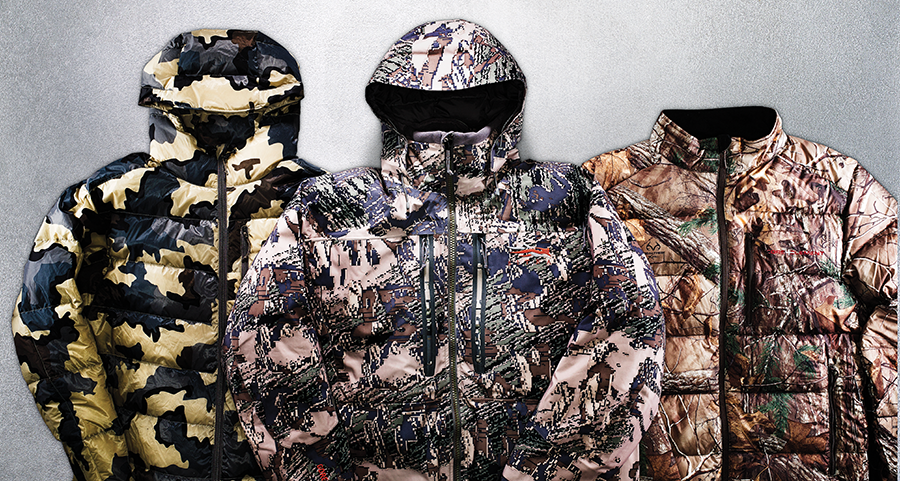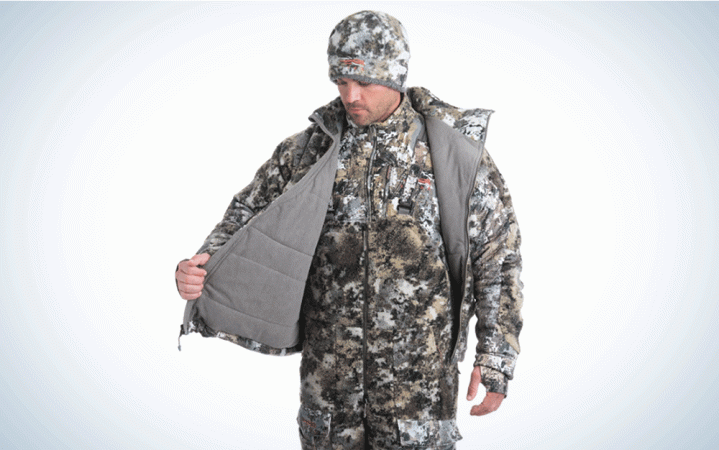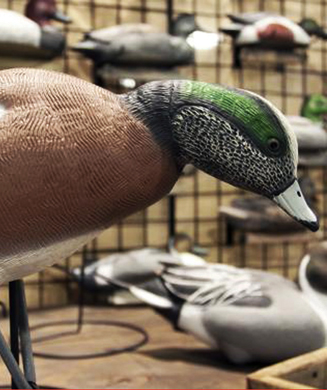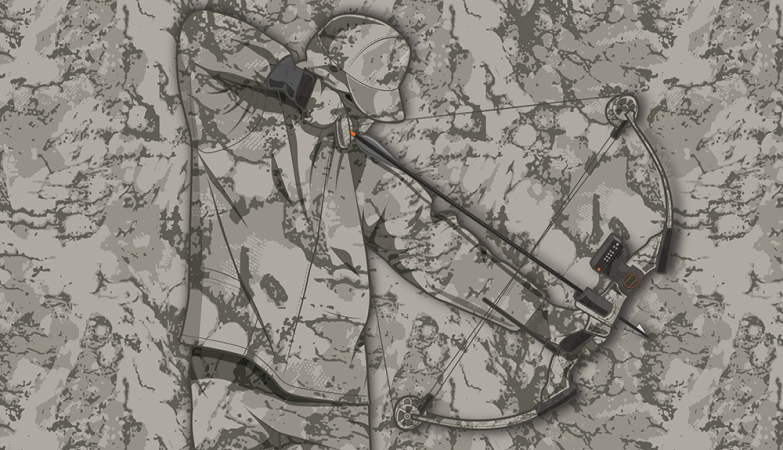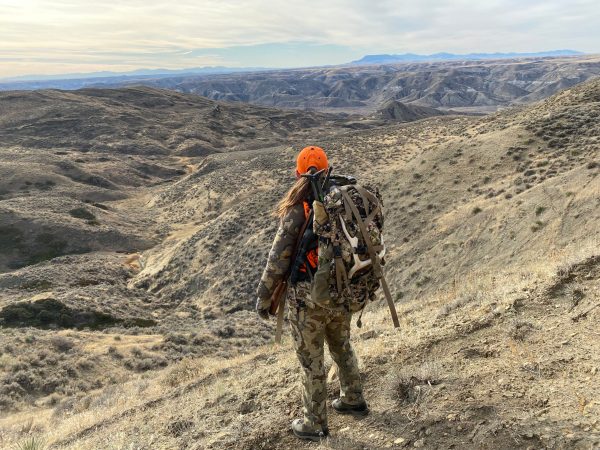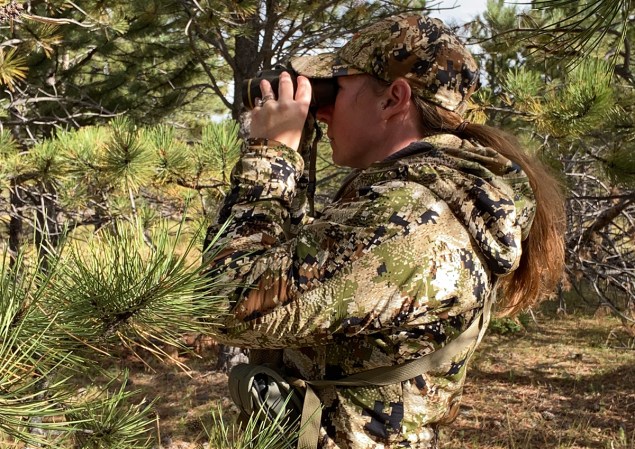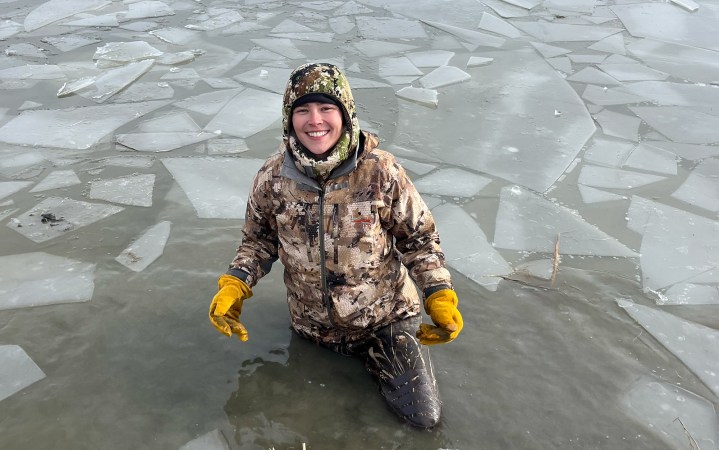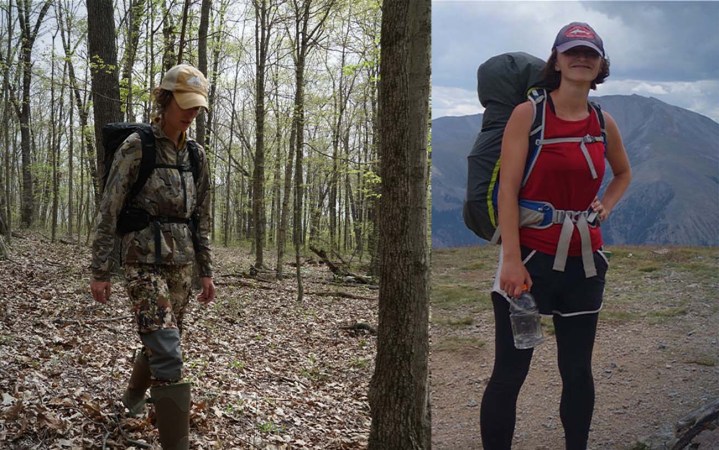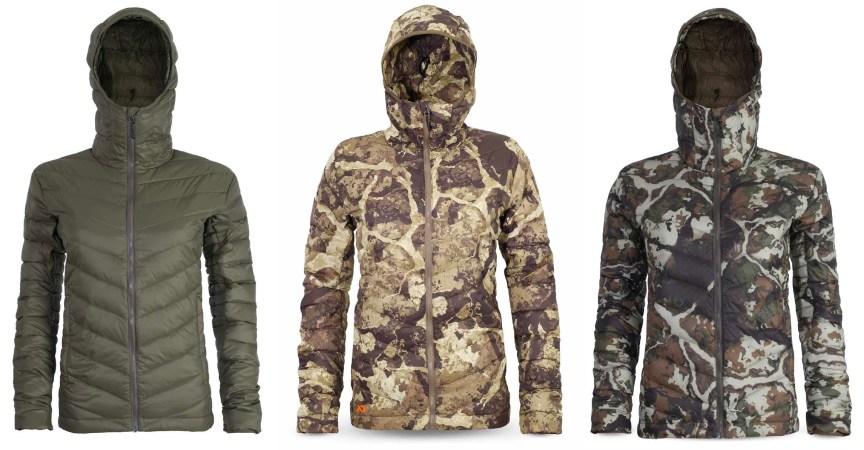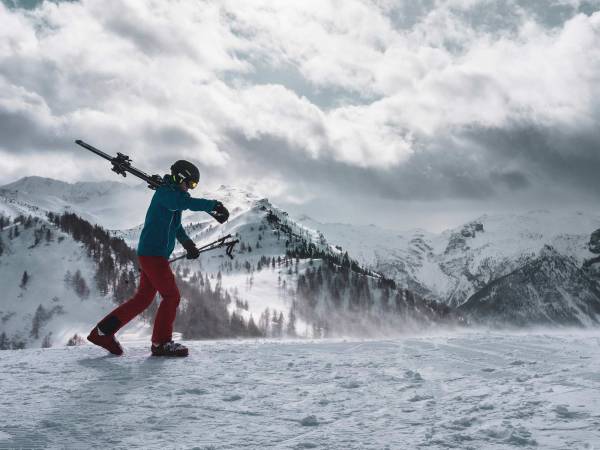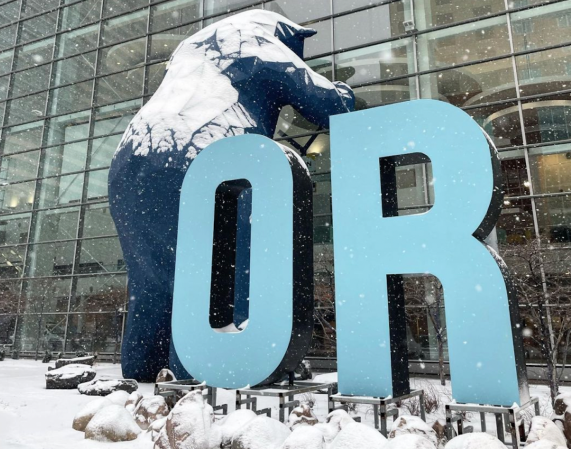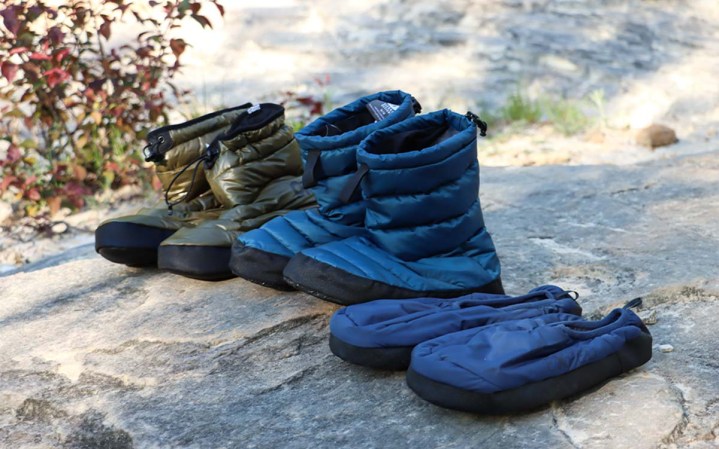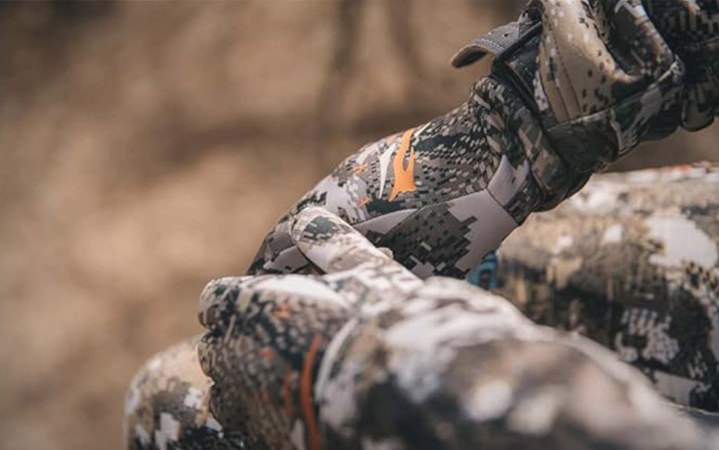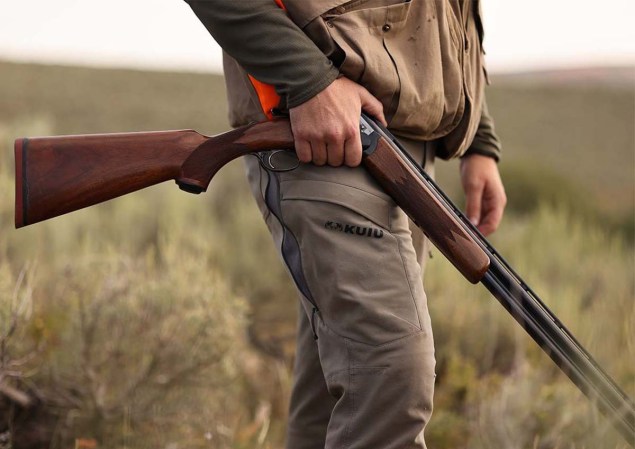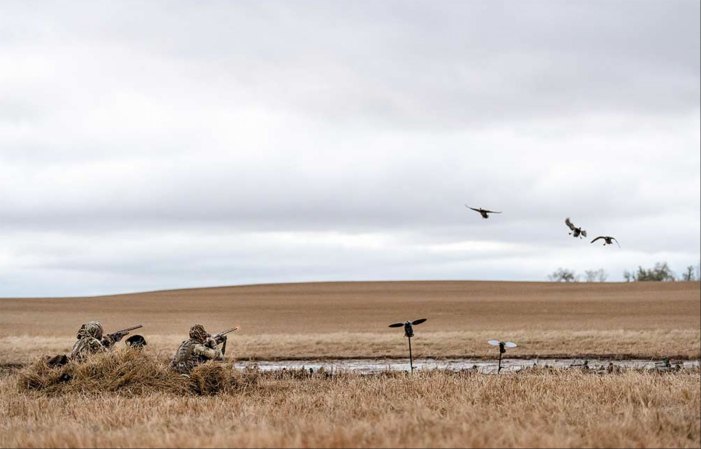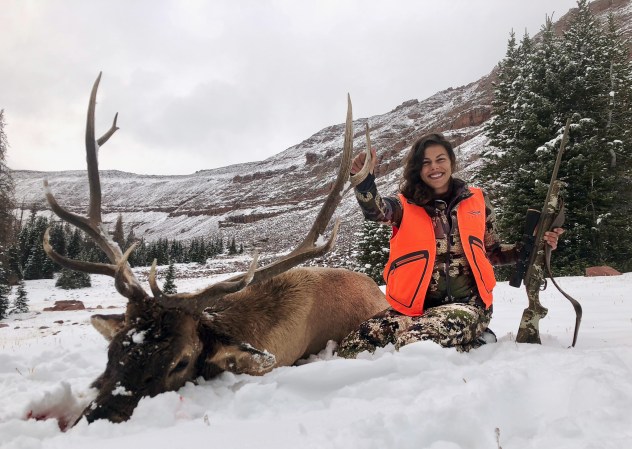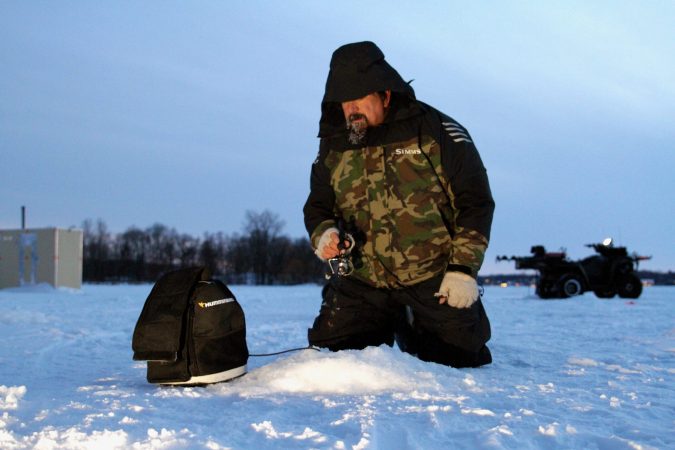We may earn revenue from the products available on this page and participate in affiliate programs. Learn More ›
Outdoorsmen have had a complicated relationship with down ever since Eddie Bauer patented the first quilted down jacket in 1940.
Down’s warmth-to-weight ratio and packability are unmatched. But it has a major technical shortcoming: If it gets wet, it loses all its insulating qualities (and takes 10 days longer than forever to dry). Too much moisture, be it from humidity, sweat, or—heaven help you—a sudden torrent of rain, and your expensive down jacket will suck up the moisture like a sponge. In the mountains, this could mean your life.
Still, for low-activity and/or sedentary adventures where dry but extreme cold rules, down is revered as Mother Nature’s ultimate insulator. For more than 70 years, it’s remained the standard by which modern synthetic insulations—Thinsulate, PrimaLoft, and the like—have been judged.
Now, the outdoor-clothing industry is using the latest textile innovations to create modern down-insulated garments that are water repellent. “Performance down” is the catchall buzz phrase for the hottest trend in cold-weather clothing since the advent of polar fleece. But what’s driving this innovation? What’s the difference between the products? And how does a hunter decide if the garments are worth the price?
Nature Meets Technology
The down revolution began a few years ago, when outdoor-clothing manufacturers began working with textile engineers to make down hydrophobic at a molecular level—treating individual feathers with a polymer finish that made the fill all but impervious to moisture, while not affecting its feel, weight, warmth, compressibility, or washability.
According to Jonathan Hart, founder of Sitka Gear, the breakthrough was the hot topic at the 2011 Outdoor Retailer Show, one of the outdoor-apparel industry’s largest trade shows. Hart remembers at least three companies announcing proprietary technology plays for treated down. At this year’s show, there were no fewer than five.
“All [the technologies] are essentially the same, each based on applying a durable water-repellent (DWR) finish to down,” he says. “Our initial field testing was pretty exciting—down products that you didn’t have to run from the rain with.”
Sitka, along with Kuiu and Core4Element, began exploring options utilizing treated natural down in their high-end hunting apparel. And then came word that PrimaLoft—an industry leader in synthetic insulation—was in the process of taking water-repellent down to the next level. In January, PrimaLoft introduced its signature Performance Down Blend—a three-tiered combination of its own brand of treated goose and duck down blended with synthetic fibers.
To Blend Or Not to Blend?
Right now, Sitka is the only hunting-apparel maker utilizing PrimaLoft’s hybrid blend. Its Blizzard Series parka and pants use PrimaLoft’s middle-of-the-road Silver Insulation Down Blend, a 60/40 mix of treated duck down and the company’s proprietary synthetic fiber. Sitka’s Hart says the decision to utilize a down-synthetic blend over 100 percent treated down came after years of testing in the backcountry.
“Treating anything with a durable water-repellent finish has an inherent problem,” he says. “The finish breaks down over time. Even if your DWR finish is in perfect working condition, eventually you can saturate the product. If down gets wet, it doesn’t dry fast. And it’s even worse if it’s coated down. Our field testing kept coming back to this reality, and we didn’t want to put customers in the field with a false sense of security.”
Sitka’s competitors, Kuiu and Core4Element, which utilize 100 percent treated goose down, conducted their own tests and determined that adding synthetic material to treated down only served to reduce cost and quality at the price of adding unnecessary weight and bulk.
“Kuiu’s Super Down line uses Toray’s Quixdown, which is European goose down with a proprietary DWR finish,” says Patrick Mayer, Kuiu’s head of marketing and development. “Because of the colder climate in which the geese live, European down is considered the best in the world. We found through independent third-party testing that Toray’s DWR finishing was superior to anything on the market in terms of wash durability and how long it would take to wet out.”
Core4Element’s Andy Church—whose company uses a brand of DWR-finished down known as DownTek—echoes Kuiu’s Mayer’s belief that 100 percent treated down offers hunters a superior choice in garments.
“We felt that DownTek’s nano-coating technology offered the best all-around warmth-to-weight ratio, as well as longevity and durability of product life, while retaining a competitive price,” Church says. “While there are other alternatives, we wanted to offer a high-end, name-brand, water-repellent, down-insulated garment at a price that would allow our customers to experience this new technology without breaking the bank.”
The bottom line? Both options represent a marked improvement over traditional down, and that’s something all outdoorsmen can warm up to.
KUIU
Super Down Hooded Jacket
MSRP $250
Insulation Toray Quixdown 850-plus-fill waterproof European goose down
Weight 10 oz.
What we like
Features a unique stretch fabric (also from Toray) and a tapered-arm design for an athletic fit; wears like a cozy second skin.
Sitka Gear
Blizzard Parka
MSRP $699
Insulation PrimaLoft Silver Insulation Down Blend (60 percent water-resistant down, 40 percent PrimaLoft Ultra-Fine fiber)
Weight 46.6 oz.
What we like
Bombproof construction with welded zippers and three layers of weather-proof Gore-Tex.
Core4element
Elevation Jacket
MSRP $260
Insulation DownTek 700-fill Canada goose down
Weight 17 oz.
What we like
Works as a lightweight insulating layer for under a shell, but durable enough to be used as an outer layer too. Bare-bones and comfortable, it can be stuffed into its chest pocket.
